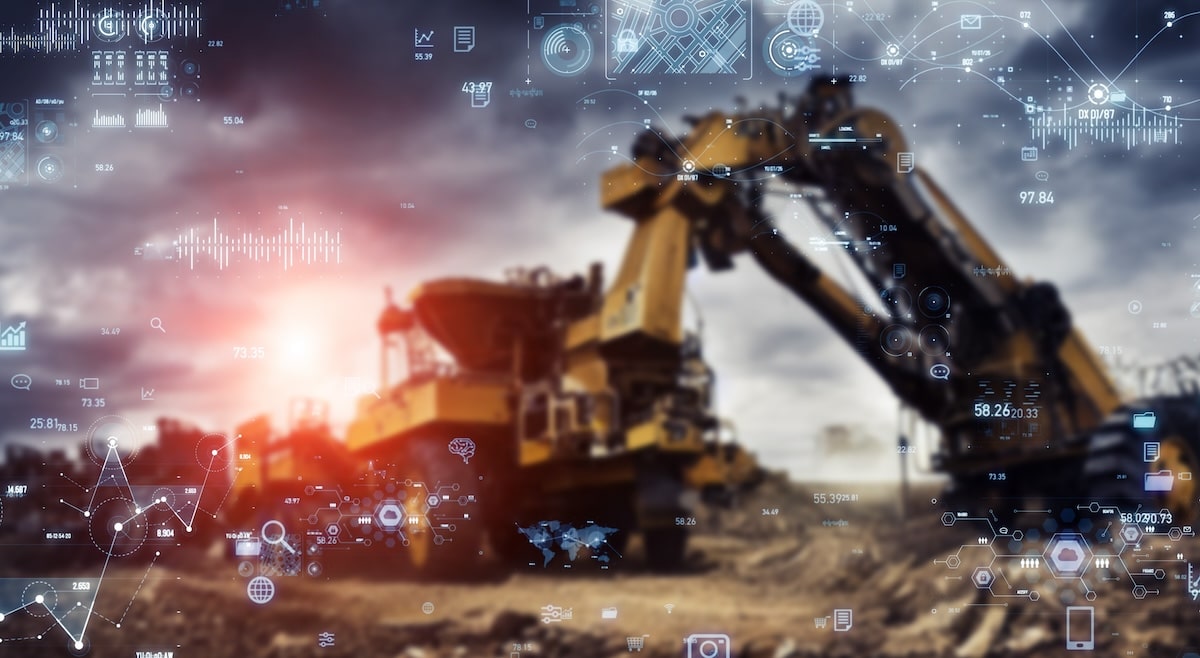Mining Industry Trends
DBA Silencing is a manufacturer of mining truck parts and systems, and has been for decades. We spend most of our time carefully constructing exhaust kits and components, as well as air intake and coolant units. We are generally focussed on goals such as improving the durability of our offerings and finding operational efficiencies that will enable us to keep our prices competitive. Occasionally, however, we zoom out and spend some time reviewing the mining industry as a whole. This is, as you can imagine, an important part of our organization’s long-term planning.
We look at the financial side of things, at mining trends. We also consider mining equipment trends, at the way that mobile assets are evolving. And of course we try to keep up with mining market trends related to technological advancement.
In this post, we’ll explore five mining trends currently on our radar. The mining industry is a sprawling and complex field, and so this list is by no means meant to be comprehensive. It is simply, as mentioned, a brief overview of the macro-level patterns that we’re tracking here at DBA Silencing.
Top Five Mining Trends
1. Environmental Initiatives
The push for sustainability and decarbonization is rapidly reshaping the mining industry all across the planet. As countries strive to meet climate goals under the Paris Agreement, the pressure on mining companies to reduce their carbon footprint has intensified. Many mining firms are now concentrating on low-carbon technologies, energy efficiency, and cleaner production methods. The use of renewable energy – such as solar, wind, and hydro – has become more prevalent, replacing traditional power generation based on fossil fuels.
We expect that, in the final quarter of 2024, CCS {Carbon Capture & Storage} technologies will continue to gain traction. The same can be said for the electrification of mining equipment. Electrifying machinery like trucks, excavators, and drill rigs reduces emissions and enhances energy efficiency. Major players such as Rio Tinto and BHP have already started transitioning their operations to cleaner energy sources, and we anticipate that other companies will follow suit.
Mining companies are also being urged by investors and regulators to adhere to ESG (Environmental, Social, & Governance) standards. A growing number of financial institutions are making sustainable performance a condition for investment, thus motivating both multinationals and smaller enterprises to adopt greener mining practices.
2. Automation & AI
Automation and AI {Artificial Intelligence} are revolutionizing the mining sector, offering unprecedented levels of efficiency, safety, and accuracy. The use of autonomous vehicles, drones, and AI-driven analytics will continue to expand across mining operations worldwide. This mining trend is particularly crucial for remote or dangerous mining environments, where minimizing human presence substantially reduces risks.
AI-driven software tools are now being used for predictive maintenance, resource estimation, and mineral recovery optimization. Contemporary algorithms can analyze massive amounts of geological data to improve exploration accuracy, reduce operational costs, and predict equipment failures, thereby avoiding unplanned {and expensive} downtime.
Companies like Caterpillar and Komatsu are at the forefront of mining automation, providing autonomous haul trucks {and other mobile assets} that have dramatically increased operational efficiency. The integration of AI is not limited to machinery; it is also employed in improving supply chains, allocating resources, and forecasting markets. As AI continues to grow more sophisticated, mining operations will become more streamlined, which will reduce waste and increase productivity.
3. Circular Economy
With the increasing focus on resource efficiency and sustainability, the concept of a circular economy has gained prominence in the mining sector. A circular economy encourages the reuse, recycling, and recovery of minerals to minimize waste and extend the life cycle of materials. This is particularly relevant as the demand surges for critical minerals like lithium, cobalt, and rare earth elements, which are essential for renewable energy technologies and electric vehicles.
In 2024, mining companies invested in technologies that enable the recovery of valuable minerals from mining waste and tailings, and they will almost certainly continue down this path. Example: the reprocessing of tailings involves extracting additional minerals from previously mined materials, reducing the need for new extraction and lessening environmental impact. Additionally, partnerships between mining companies and recycling firms are becoming more common, particularly in sectors like electronics and batteries, where mineral recycling is key to reducing supply chain pressure.
Governments and international bodies are increasingly supporting these initiatives through regulations and incentives that promote recycling and resource recovery. The European Union’s Circular Economy Action Plan and similar policies in other regions are guiding the mining industry toward sustainable resource management practices.
4. Geopolitical Tensions
At present, access to critical minerals {such as lithium, cobalt, nickel, and rare earth elements} is a significant focus for governments and companies around the world. These minerals are essential for manufacturing batteries, renewable energy infrastructure, and advanced electronics, making them indispensable for the global energy transition. However, geopolitical tensions surrounding the supply of these minerals continue to pose challenges.
Countries are increasingly looking to diversify their sources of critical minerals to reduce dependency on a few dominant suppliers, particularly China, which currently controls a meaningful percentage of the global supply of rare earth elements. Many nations are ramping up domestic exploration and mining activities, while also seeking to establish strategic partnerships with other resource-rich countries. For instance, the United States, Canada, and Australia are investing heavily in the development of their critical mineral industries to counterbalance China’s influence. Meanwhile, African nations like the Democratic Republic of Congo {a major supplier of cobalt} are becoming geopolitical hotspots due to the competition for mineral resources.
The intersection of resource nationalism and international trade will continue to impact the mining landscape in 2024 and in the years to come, making supply chain security a top priority for governments and mining companies alike.
5. Digitalization
Digitalization is not a new mining trend, but we predict that it will start to play an even more noteworthy role as mining companies embrace advanced data analytics to enhance decision-making processes. From exploration and planning to operations and closure, digital tools like real-time data monitoring, blockchain for transparency, and IoT {Internet of Things} technology are transforming the way the industry operates.
Example: smart sensors embedded in mining equipment allow for real-time monitoring of environmental conditions, equipment health, and production levels. This data is analyzed to optimize performance and increase operational efficiency. In addition to this, digital twins – virtual replicas of physical assets – are increasingly being used to simulate mining operations, enabling companies to test various scenarios before making costly decisions.
Blockchain technology is also being utilized to improve transparency and traceability in mineral supply chains, ensuring that minerals are sourced ethically and sustainably. This is especially relevant for conflict minerals, where traceability is critical to meet regulatory and consumer expectations.
Summary
In conclusion: the global mining industry has undergone massive shifts in 2024 due to the mining trends outlined above, and the pace of change is unlikely to slow. While those of us working here at DBA don’t pretend to be experts on the mining industry, it seems reasonable to suggest that the mining sector will continue to be defined by its efforts to align with global sustainability goals, leverage new technologies, and navigate tricky geopolitical terrain.
As companies invest in automation, recycling, and data-driven processes, the industry appears to be making progress in key areas such as safety, efficiency, and environmental responsibility. These trends are not only shaping the future of mining but also influencing our civilization’s broader transition to a low-carbon global economy.



